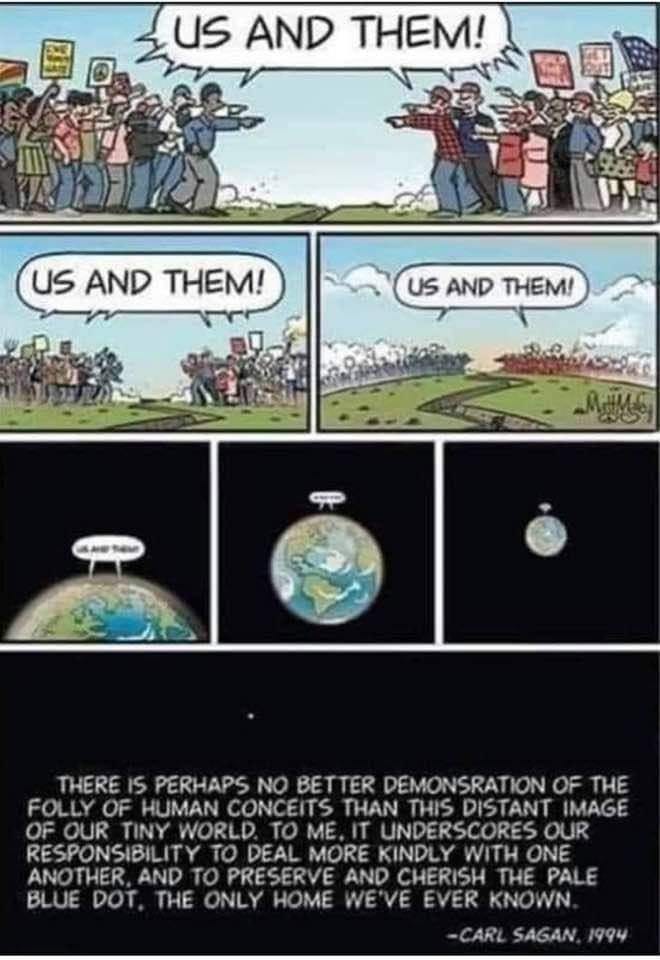Revolution, or Random Coin Toss
While a tight 50/50 split in voting is often interpreted as a sign of deeply divided opinions, there is another statistical explanation that could be at play.
When there’s a 50/50 split in an election or any public opinion scenario, it can create a false sense of polarization. In this situation, ideological extremists on both sides can manipulate the appearance of that split to claim that their extreme views are widely supported or validated. In reality, many people in the middle may not have strong opinions, or may simply be making a choice out of necessity, habit, or randomness—rather than from any deep ideological conviction.

This phenomenon is particularly pronounced when there's voter fatigue, low engagement, or when the options available don't excite or inspire confidence. In these cases, a noisy minority at the fringes might push narratives that exaggerate how divided the electorate is, even though the truth may be far more mundane—most people don't have extreme views or, as you said, any views at all.
It’s a great example of how perception and reality can drift apart in public discourse. The statistical distribution (50/50) can be used to sell a story of conflict and extremism when the reality is closer to indifference or disengagement.
This outcome might not indicate strong convictions on either side. Maybe they’re making choices with little information or interest.
In statistics, the law of large numbers suggests that random events, like flipping a coin, tend to even out over time, gravitating towards a 50/50 split with enough trials. In elections, if a significant number of voters are uninformed or don't have strong preferences, their choices could behave in a similarly random fashion. As a result, the outcome would move towards an equilibrium where each candidate or party garners roughly equal support—not because of passionate division, but because of the randomness of voter decisions in a large sample.
This theory contrasts the common narrative of polarization. Instead of seeing a society torn down the middle by fierce ideological differences, it could imply that many voters don’t know what to think - they are simply flipping a metaphorical coin or following a haphazard choice-making process. This random distribution of votes might look like a split, but in reality, it's more about the lack of deep, clear preferences among the electorate.
The close election or a dead-even poll might not mean what the hucksters say it does to divide us and gain power. Is society in the middle of some deep, existential divide? Is this revolution or random chance? The truth is going to make a big difference in how we look at the upcoming elections.
What if most people don’t actually care that much? What if this whole 50/50 thing is just… a statistical coin toss? We’re basically flipping a coin, and somehow the extremists on both ends are sitting there like, “Look! Half the people agree with *me*! See? I told you we need to nationalize falafels!” or “We should privatize sidewalks!”
And the rest of us? We’re just trying to figure out which candidate sounds slightly less exhausting. Because maybe a lot of folks don’t have strong feelings either way. We’re mostly not out here on the front lines of some ideological war. We’re out here scrolling Instagram and hoping the next four years aren’t any worse than the last.
If you ask a large enough group of people to make a choice—any choice on something they don’t really know the answer to—you’ll probably end up with something close to 50/50. It’s basic stats, like flipping a coin a thousand times. Heads, tails, whatever. No one's passionately pro-heads or anti-tails. And yet, the radicals on both sides love to take that 50/50 result and say, “Aha! Look, half the country is just as crazy as I am!”
No, Kevin, that’s not what’s happening. What’s happening is most people are like, “Well, I hope this one won’t make things too much worse, so sure, why not?” It’s like picking between two sandwiches you didn’t order. Neither looks great, but hey, you’re hungry and it’s lunch.
So next time you hear someone say, “The country is deeply divided,” maybe… we just don’t know what to think. Maybe the 50/50 split is just the mathematical result of collective indifference. And extremists on both sides are mistaking random coin flips for a revolution.






